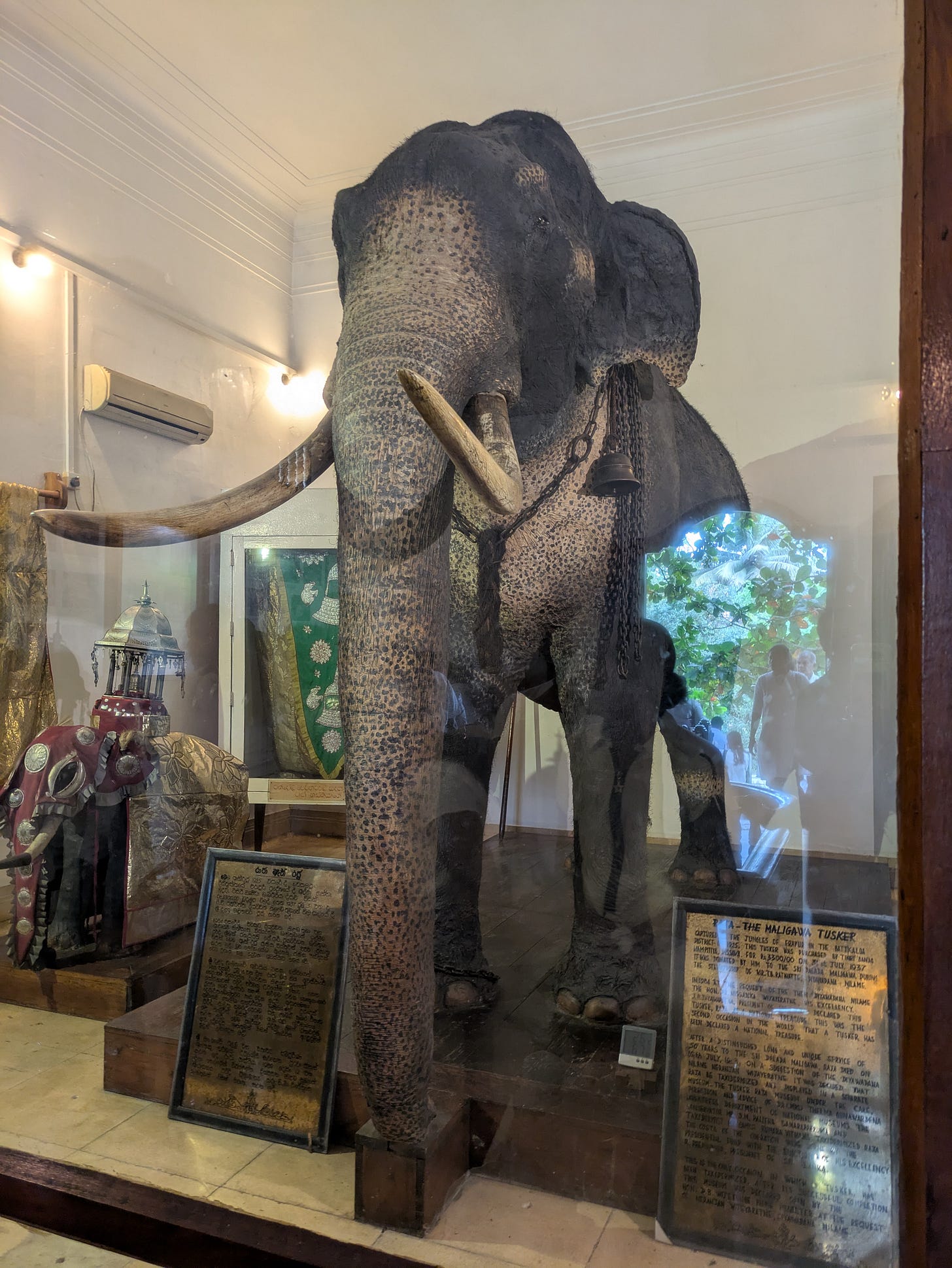Dambulla Cave Paintings
After leaving Sigiriya, we head to Dambulla to see its famous cave paintings. It’s the usual drill of visiting a Buddhist site: trek up a steep hill, take off your shoes, and walk through sacred grounds.
I really really dislike the shoe removal. Until Sri Lanka, every holy place that requires show removal such as temples in Thailand or mosques in Malaysia is for keeping the dirt OUT of the holy place. But here, it seems to be for keeping the dirt OFF YOUR SHOES instead, because the holy place is bare, unswept ground with uneven stones, dirt and gravel. It’s mostly outdoors and very very dirty. I keep socks on and they come back black on the bottom. Gross. I learned a lot of this trip to Sri Lanka. And one of the things I learn is my personal boundary about wearing shoes on dirty ground.
But let’s talk about the site instead shall we?
The Dumbulla caves are filled with incredibly well-preserved Buddhist paintings and statues that date back 2,000 years.
Inside the caves, Buddha statues are packed in so tightly that it feels like a warehouse. Papa Bear jokes that they probably didn’t plan it this way, but after 2,000 years of carving, painting, and creating, they ended up with more Buddhas than they could handle—just like we jam all our extra stuff into the attic. That sounds about right!
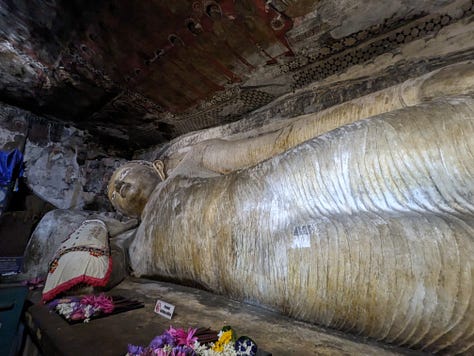

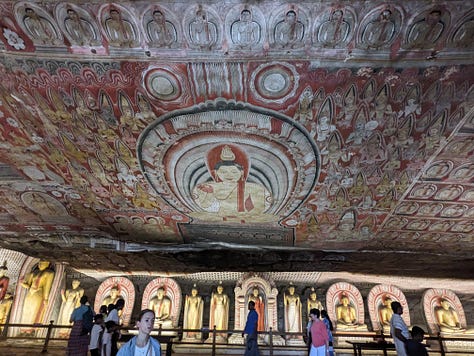

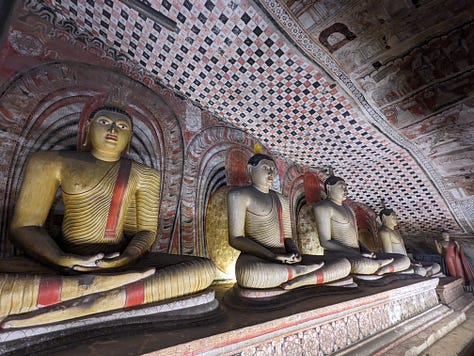


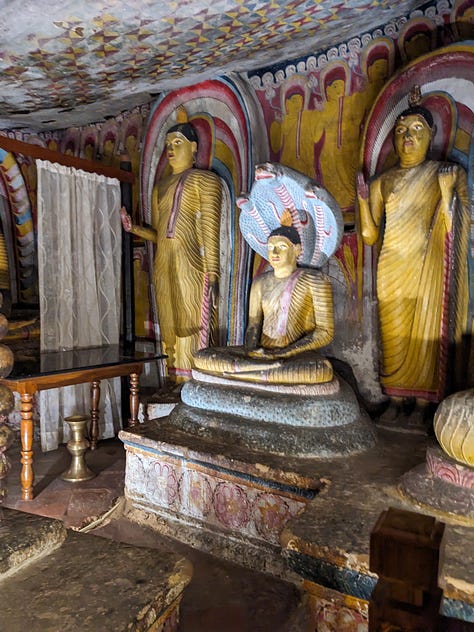

It’s ironic when you think about it. Buddhism isn’t about idol worship, and Buddha’s philosophy centers on inward reflection. Yet all these statues and paintings are made of him, almost exclusively of him and nothing else. Imagine if Boddhitsatva came back to life and saw all these statues made in his honor—what would he think?
Eating Pain
Mealtime in Sri Lanka is always an adventure, and by “adventure,” I mean trying to avoid eating pain, aka spicy food. We find an Indian restaurant, and I order the two plainest thing I can find on the menu: naan bread and clear vegetable soup. Yet I still tell them no spicy. The waiter bobs his head “ok.”
The soup arrives with three chilies floating in it!
Dah! I pull them out and taste it. Yup, the pain has already infused into the clear soup. I return the soup.
Papa Bear isn’t spared either—his dish suffers the same fiery fate.
I can just imagine the kitchen conversation:
Server: “Customer says no spicy.”
Cook: “Okay. Instead of ten chilies, I’ll use three. Barely any taste now!”
The other reason we end up eating so much pain in Sri Lanka is because even their black pepper is spicier. What looks like a reasonable amount of black pepper sprinkled on a dish turns out to be anything but reasonable! Their black peppercorns are freshly dried straight from the pepper tree, bursting with heat and flavor. Meanwhile, the black pepper we’re used to has traveled for months and sat on a shelf for another six months—or maybe even two years—before we finally grind it.
Eventually, I learn to say, “No chili, no black pepper, no spicy” three times when we order food. Even then, the food still sometimes comes out spicy. It’s like they just can’t help themselves!
Wood Apple
I love discovering new fruits when I travel. There are now very few new ones to discover. A new variety of mangoes is common, but a brand new category of fruit? Very rare.
So imagine how excited I am to discover that Sri Lanka has something brand new: the Wood Apple. It looks like a hard, round brown tennis ball.
I see it on the menu at the Indian restaurant, and can’t help but order the wood apple shake.
The waiter says, are you sure?
I said yes, feeling perplexed about his reaction.
The shake arrives. It’s the moment of truth. I can feel the intent gaze of both Papa and Baby Bear on my face.
I suck on the straw, swish it around, and swallow. I frown.
It’s weird.
It is thick and tastes like blue cheese.
Yup. A fruit that tastes like blue cheese.
Papa Bear braves the straw and tries some too. Yup. It’s blue cheese alright.
Since I am now dairy-free, I rather miss blue cheese. So it’s nice to have access to vegan blue cheese.
But an entire shake is too much. Perhaps it would taste better as a jam.
Here’s our “before drinking the shake” picture.
Kandy, the third empire of Sri Lanka
We arrive in Kandy and check into our favorite hotel so far. We splurge by paying almost 3 times as much as last night. The room is spacious, with a kitchen, a loft, a living room, and a balcony overlooking the lake. A cheeky monkey even visits our balcony to say hello!
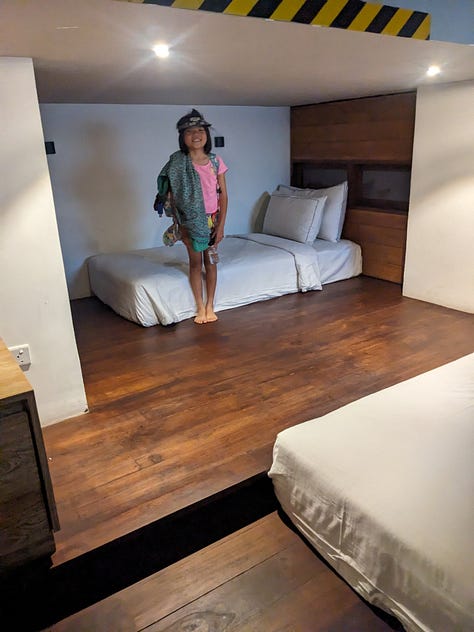
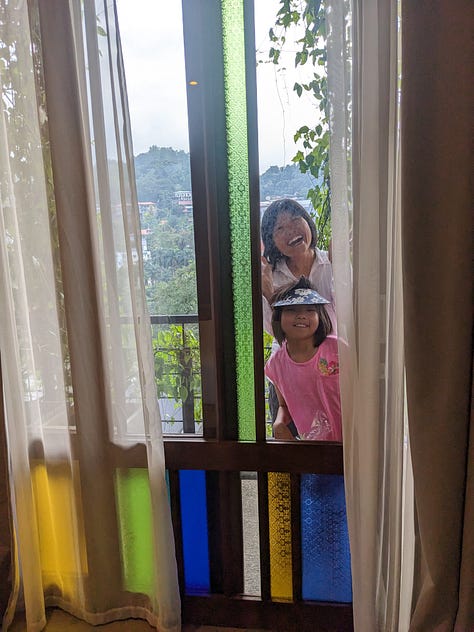

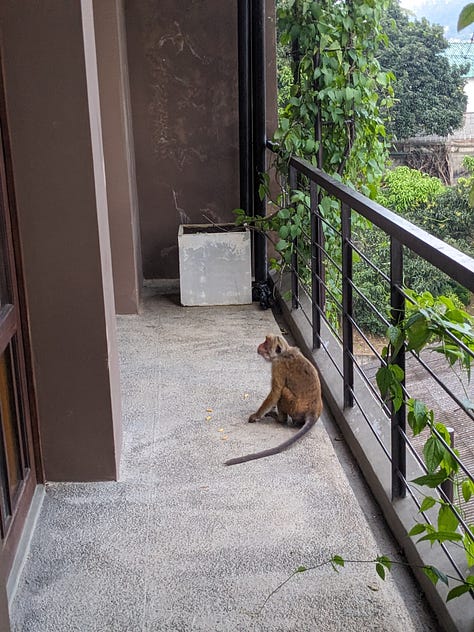

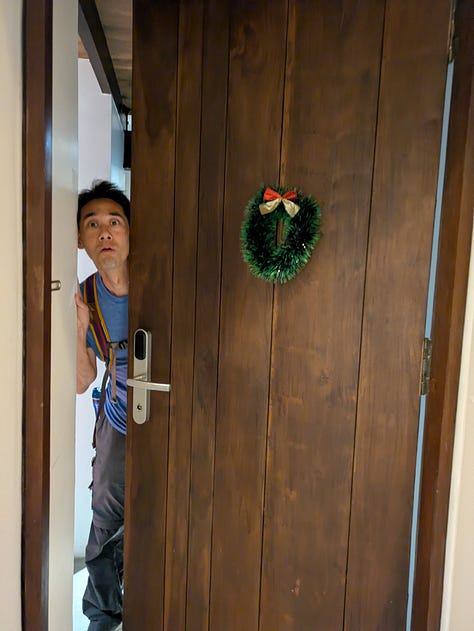
Kandy is the last capital of Sri Lanka’s ancient kingdoms, known for its cultural heritage and lush surroundings. It’s also home to the Temple of the Sacred Tooth Relic, one of Buddhism’s holiest sites. This relic is said to have belonged to Buddha himself, and legend has it that whoever possesses it has the divine right to rule Sri Lanka.
Outside of our lovely hotel, Kandy is crowded and dirty, with lakeside paths marred by endless bird droppings. We’re thankful for our clean oasis to escape to.
For dinner, we try a nearby Chinese restaurant and meet a British expat who lives in Kandy for six months of the year. While we can’t quite understand why he chooses Kandy, he seems content. He tells us the restaurant is owned by a Chinese and British couple. We order the Chinese food and sure enough, the beef is tenderized the Chinese way. But the black bean chicken which is not spicy in Chinese cuisine, came out spicy again as it has too much black pepper in it. Dah — Eating pain strikes again.
Botanical Garden
The next morning, our driver takes us to the Peradeniya Botanical Gardens. The British loves botanical gardens and build amazing ones. This one meets their high standards with 3 palm avenues, a grass “exhibit" that looks like a lawn store, and endless manicure plants.
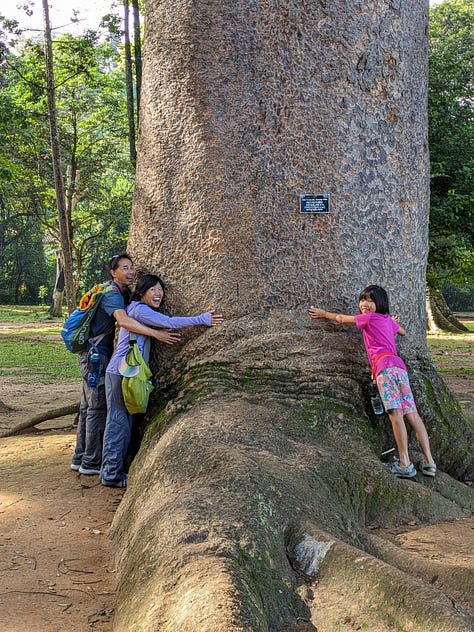





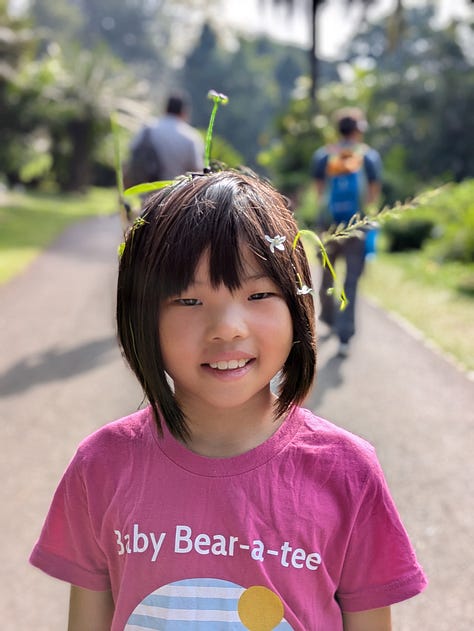

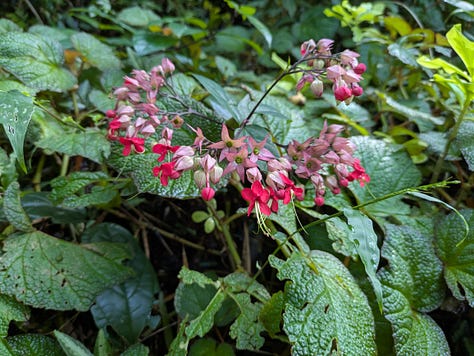
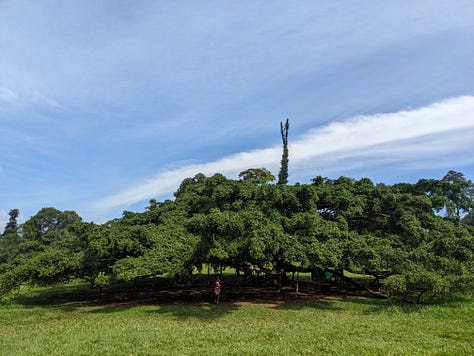
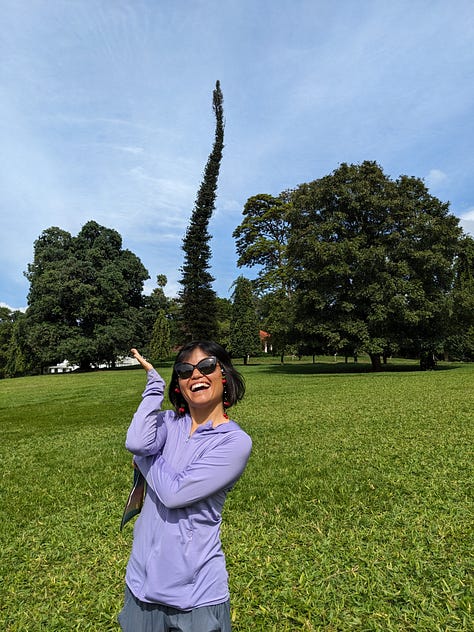


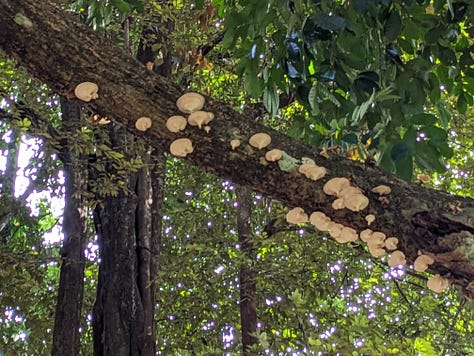
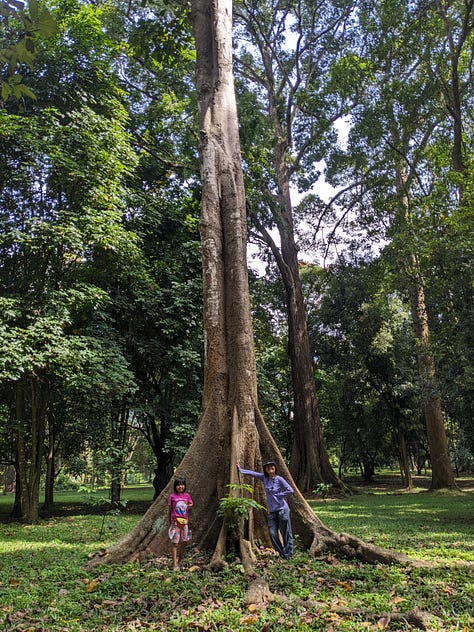
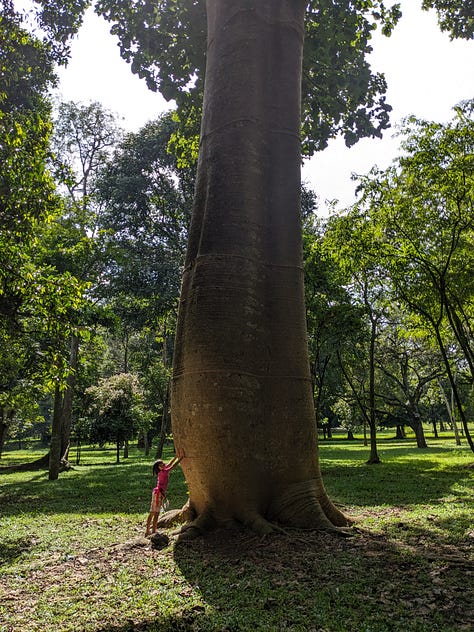
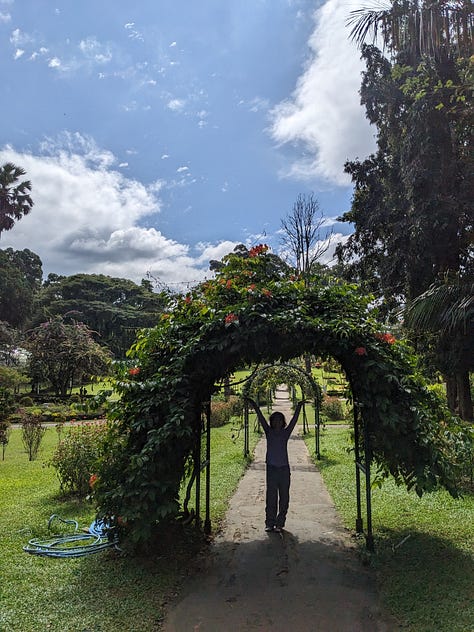
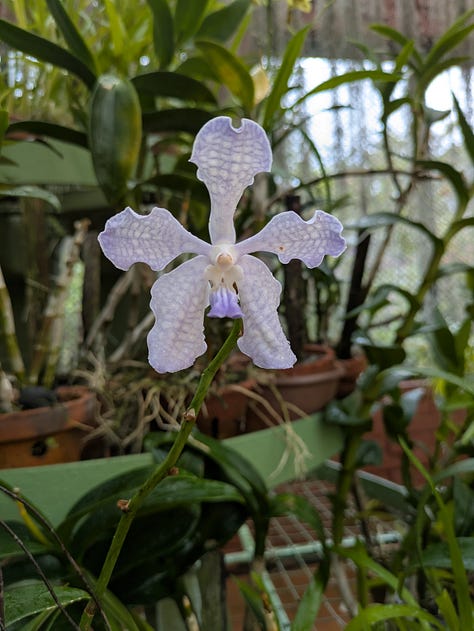
The Sacred Tooth Relic
Next, we visit the Temple of the Sacred Tooth Relic. Our driver tries to park nearby, but after circling a few times, he gives up and parks at our hotel instead, so we walk over. Luckily, our hotel is close!
The temple is packed with worshippers. Our guide explains that this is the “Mecca” for Theravāda Buddhism (the Sri Lankan branch). The Tooth Relic is one of the few relics with a recorded history tracing back to the Buddha himself, making it incredibly sacred.
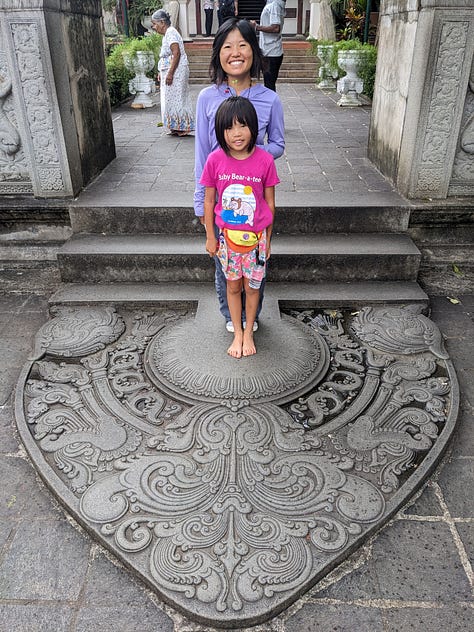
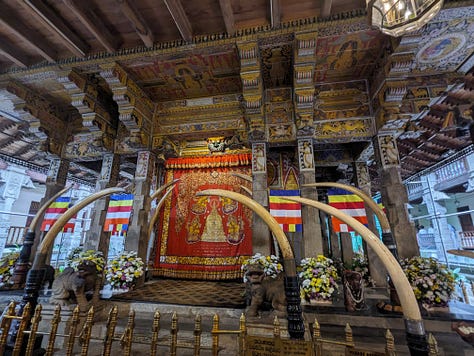
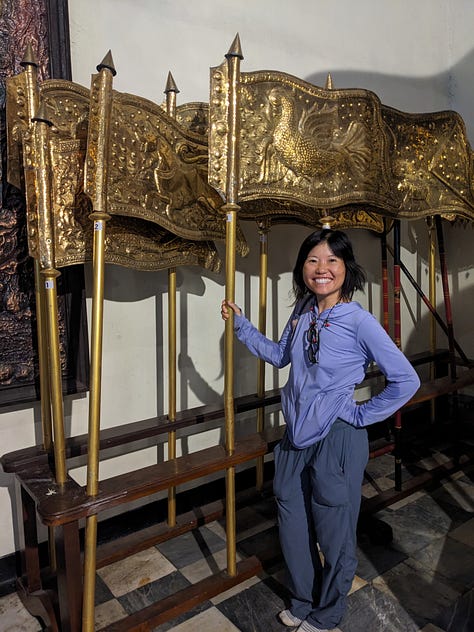

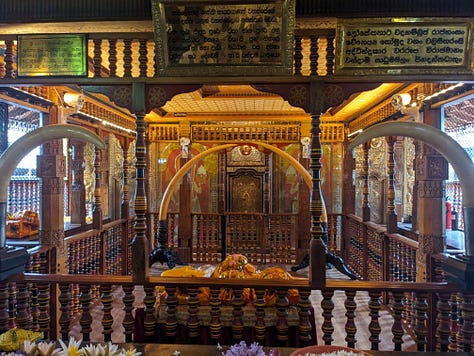
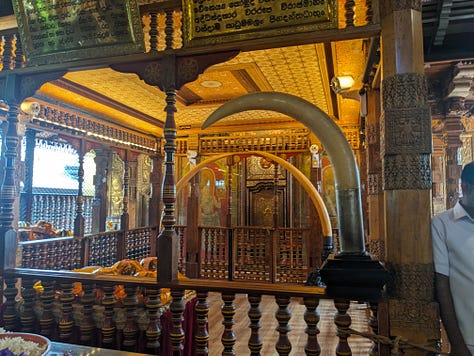
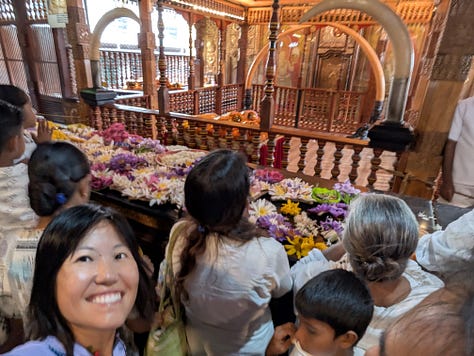
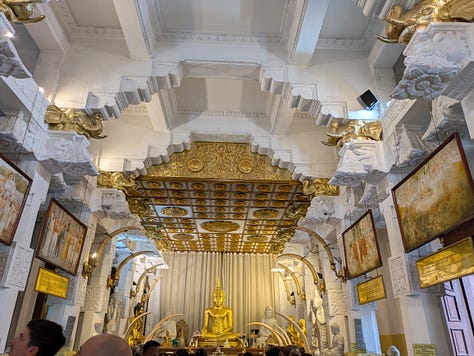
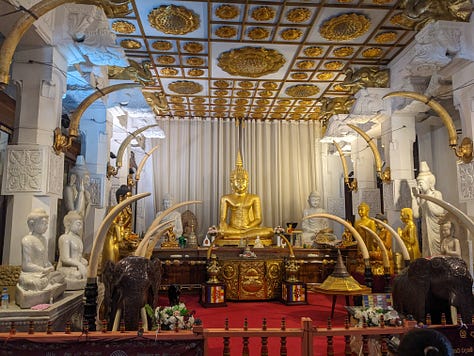
We learn about palm frond books, ancient texts written on dried palm leaves, and the octagonal building where the rulers of the Kandyan Empire addressed their subjects.
The most exciting thing we learn is about the temple’s ritual elephant, the one chosen to carry the Tooth Relic in the annual parade. This elephant has to meet strict criteria: it must have two forward-curving tusks, and both its trunk and tail must touch the ground.
The current ritual elephant is so revered that when the last one died, the whole nation mourned, and they even built a museum in its honor.
The Kandyan Dance Show
In the evening, we attend a Kandyan dance show. The music is entirely percussion, the costumes are vibrant, and the dancers are full of energy. Interestingly, there are more male dancers than female, which is unusual to see.
The show features 15 different dances, including a beautiful peacock dance, a mask dance, and even a plate-spinning performance. The finale is breathtaking—dancers walk barefoot across burning coals!
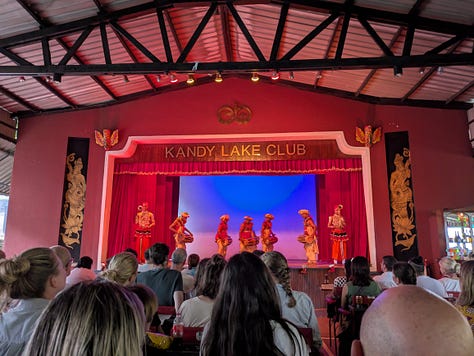
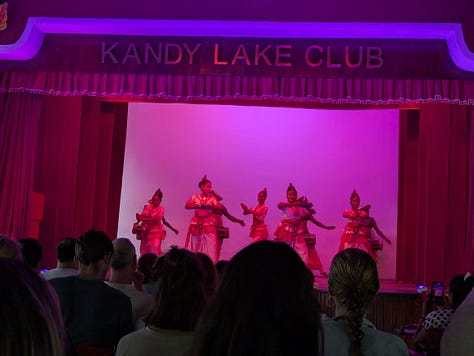
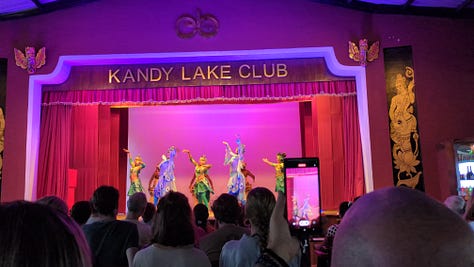

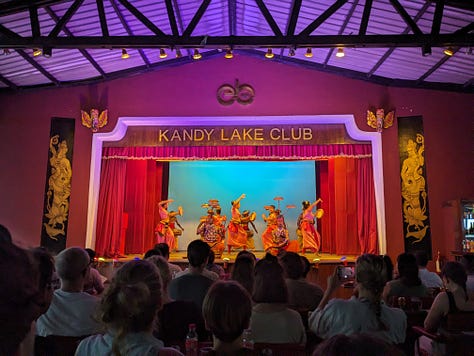
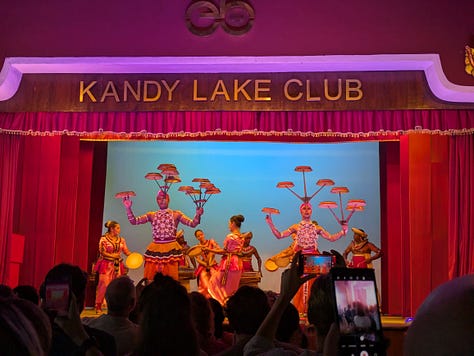
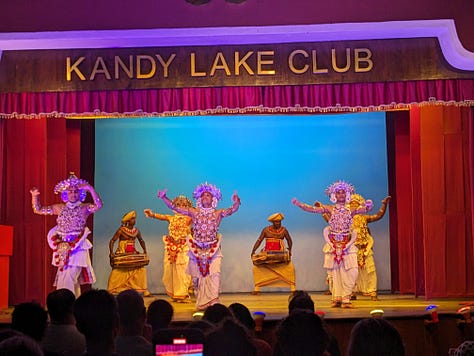

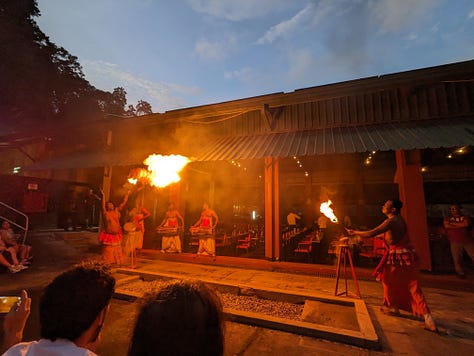
Dinner and Dancing
For dinner, we head to a rooftop restaurant at a nearby hotel. It’s not the food that wins us over—it’s just as mediocre as everywhere else so far—but the atmosphere makes up for it. A violinist plays live music, creating a wonderfully romantic vibe.
Papa Bear and I even sneak in a little dance while Baby Bear entertains herself by drumming on their perfectly square, but very real, bushes.
It’s a perfect way to wrap up a busy day two days in Kandy exploring history, culture, and, yes, a bit of eating pain.





